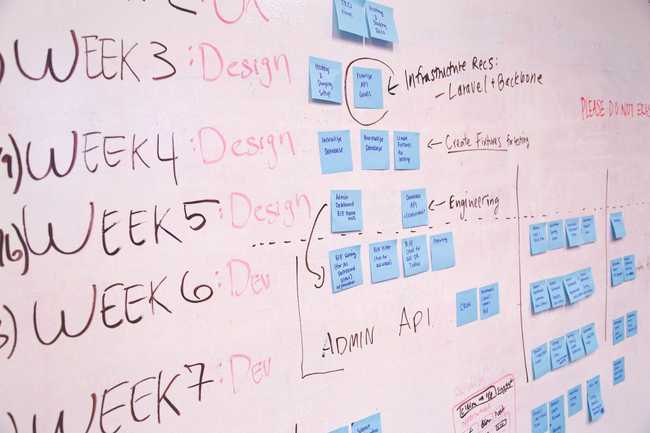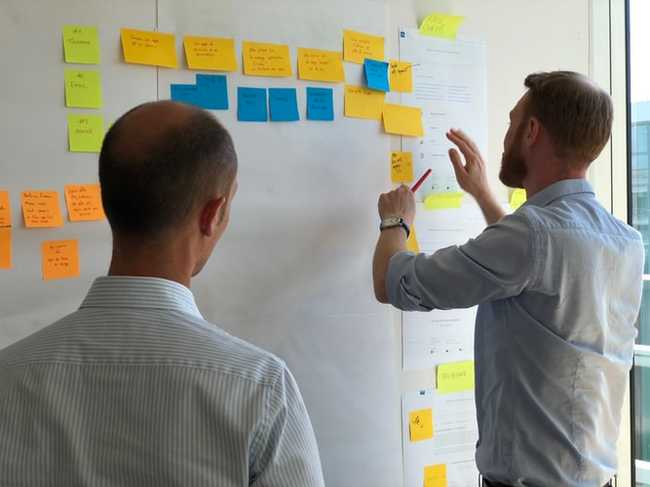
Every organization has people working for them. And those people have their own roles to perform. And among those roles lies the roles of project manager and product manager.
Sounds pretty similar, right? People often confuse the role of project and product manager when brought together. The confusion occurs frequently. So, let’s clear the confusion with this article.
How Product Manager Differs From Project Manager?
Sometimes the product manager and the project manager might work together on the same product or project and sometimes they might not. They may have different responsibilities but they influence the product greatly. Their work is what makes the product successful in the market.
Product manager

The product manager is the one who comes up with creative and innovative ideas. He/she brings creative ideas and develop strategies to make it a reality. The product manager is responsible for overseeing everything from the initial concept of the product to the launch of the product.
Let’s look at the primary responsibilities of product managers.
-
Develop a vision
The responsibilities of the product manager begin with developing a vision. Every strategy and activity starts with a vision. It typically describes what the organization wants to achieve. The vision helps to set the direction for your organization and strategies.
-
Identify user requirements
The product manager role is to identify and collect the user’s needs and requirements. Without knowing the needs and requirements of the users, it is impossible to develop a product. Without knowing what the user wants makes the product useless as well as your efforts, resources, time, and money everything goes in vain.
So, before developing a product you need to understand the users and their needs and requirements. Building a product that solves the user’s problem should be the aim of every organization.
-
Market research
Market research helps to understand the market and identify the opportunities available in the market. These opportunities can be the strength of any organization if grabbed at the right time.
Market research helps to identify the risks. This will give time for the organizations to manage the risks and find solutions to mitigate or avoid the risks. So, the product manager should identify the risk, assess, and propose a solution.
-
Develop product strategies
Next, the product manager develops product strategies also known as the product roadmap. The product roadmap includes the action plan which describes the role of the organization to meet the vision. The main aim of the product roadmap is to align the product’s vision with the organization’s goals and objectives.
The product roadmap must be clear and simple since it documents all the goals and objectives of both the company and the product.
-
Develop marketing strategies
Marketing is one of the best weapons for any organization to make a product successful. Whether the organization is small or big, marketing is important for anyone. Since customer engagement is necessary so,marketing is the only way to increase customer engagement.
The product manager works along with the marketing manager to develop different marketing strategies. The aim is to market the product successfully and increase product sales.
-
Product launch
The development of the product is finished, now the product manager launches the product. The product manager works with the marketing manager to successfully launch the product in the market.
Project manager

Just as a product manager, a project manager is also important. The main responsibility of a project manager is to align the project with the company’s budget and time. So, let’s look at the primary responsibilities of a project manager.
-
Define project scope
The project starts with defining the project scope. The first priority of a project manager is to define project goals, features, functions, tasks, and so on. It is generally about what is to be achieved and how to deliver a project.
The project manager defines project scope at the initial phase so it doesn’t hamper the development process later. To avoid the risk of schedule, budget, and time, the project scope is defined before the start of the development process.
-
Define milestones
The project manager defines milestones for the project. Milestones are like checkpoints to reach a destination. Likewise, the project manager defines each checkpoint and works on reaching the checkpoints to reach the final destination i.e to complete the project.
For example, your main aim is to develop an app. Then milestones for developing an app could be first — gather requirements, second — home screen design, third — buttons on the home screen, and so on.
Similarly, the project manager breaks the project to such milestones to make the development process easy and faster to achieve.
-
Estimate time, budget, and risks
The project manager should then estimate the time and budget for the project. He/she should ensure that the project doesn’t go beyond the estimated time and budget. He/she should also identify risks, assess them, and provide solutions. He/she should evaluate the risk before the development process begins and come up with a solution.
-
Team management
The project manager assembles a team suitable for a particular project and manage them. He/she needs to constantly motivate the employees. He/she should have the ability to coordinate individuals from different backgrounds to perform their respective tasks.
The project manager must ensure that every team member is working towards the same goals and objectives.
-
Delegation
The project manager should delegate roles and responsibilities to each member of a team. The roles and responsibilities should be explained in such a way that doesn’t create confusion. Each member should be clear about their roles.
The project manager should be supportive and provide suggestions whenever needed.
-
Track the progress
If the project fails, the project manager takes the responsibilities since he/she is managing the project. To ensure that the project is on the right track, he/she should regularly track the project’s progress.
The problems may arise at any time. Regular tracking of the project’s progress will help to solve problems at an early stage. Otherwise, a huge problem will arise on the shoulders of the project manager if the deadline is near.
-
Communication
Team members are working on a project but what happens if there is no communication between them? The project will fail for sure. Without sharing information, it is hard to work on the same page. Misunderstanding will arise, some part of the project will be untouched, and the project fails.
Communication is one of the most important factors helping to develop trust between the team members. The sharing of information will let each member know what others are working on. So, the project manager should define communication guidelines and channels to ensure coordination and collaboration. The use of tools like Slack, Trello, Skype, Git, etc. will be a huge plus point.
-
Reporting
The project manager provides the progress report of the project to superiors as well as to other stakeholders. The superiors want to ensure that the project is right on track. While other stakeholders want to ensure that they have invested in the right project.
Why a Manager Needs a Better Idea of Where a Product Should Head Next?

Providing quality products to customers is the main aim of any organization. And it starts right from the product design and implementing the design. The product manager is the one who develops ideas and concepts of how a product looks. Then, the development process begins.
Not only this, the product manager needs better ideas to make a product successful. He/she should know where the product is heading and what to do next. So, here are the reasons why the product manager needs a better idea of where a product should head next.
-
To plan
The product manager develops plans and strategies to make a product successful. He/she should plan to meet the requirements of the market to increase its market share. Since it all comes down to maximizing profit and customer satisfaction, the product manager needs to plan to meet the goals of the organization as well as of the market.
-
To make product successful
One of the main reasons is obviously to make the product successful. No one dedicates his/her time and efforts just to make the product a failure. He/she dedicates to finish the product and make it a success.
The product manager needs to coordinate with the development team and marketing team to make a product successful. They need to understand the importance of results.
-
To identify risks
The product manager has to think about different risks such as market risks, financial risks, product performance risk, and so on. He/she needs to devise plans and strategies to avoid such risks that may halt product development.
Identifying the risks is one of the main priorities of a product manager. The product manager needs to be aware of the risks and plan to mitigate the risks. Otherwise, product development fails.
-
To meet the requirements
The product needs to meet the requirements of the customers as well as meet the goals and objectives of the organization. The product manager needs to make sure that the product fulfills requirements.
The product manager is the one who communicates with customers to identify their needs. If the product doesn’t meet the needs, then every finger points towards the product manager. So, the product manager should avoid such situations from occurring.
-
To meet time and budget objectives
The product must be developed on estimated time and budget. And it’s the job of the product manager to make sure that product development is finished before the deadline and within the estimated budget.
-
Customer satisfaction
The time and effort you have dedicated is solely for satisfying the customers. Customers are the lifeline of any organization. If they disappear, it won’t be long before your organization disappears too.
It’s the part of the product manager’s job to satisfy them. Identification of needs and requirements and implementing those needs and requirements should be the main priority of product managers.
Product Manager vs Consultants

Consultants generally give advice and tell people and organizations what to do. Their primary role is to guide the organizations to help them improve the organization’s performance. The consultants gather information that helps in the product development process. The information is related to the organization and its problems, the market, the competitors, etc.
The consultants conduct research, analyze the information and statistics, and provide guidance to the organization for better performance. The consultant’s main role is to figure out the best way to solve a problem.
The consultants work on a project but the product manager owns a product. While consultants give advice to people what to do, the product managers ensure that everything is going as planned and provide the best value for the organization. The consultants tell how to improve the business but the product manager coordinates with the team to actually improve the business performance. The product manager improves his/her skills to deal with the problems.
The product manager owns the product so he/she takes every decision regarding the products. The product manager is responsible for the product’s success and failure.
Role of Product Owner When You Have Product Manager

The other job roles that people are often confused about. The roles of the product owner and the product manager may vary depending on the situation. We have already discussed the role of product manager so, let’s see the role of the product owner.
-
Manage product backlog
One of the roles of the product owner is to manage the product backlog. The product backlog is simply the list of tasks and features to be included in a product. It also includes a list of new features and changes to the existing features.
The product owner needs to identify the user’s problems and needs and convert them into user stories. He/she needs to ensure that every user story has correct acceptance criteria. He/she needs to manage the to-do list.
-
Prioritize work in backlog
The product owner then should prioritize each task in the backlog. The tasks must be prioritized based on the objectives and goals of the company as well as the product. The product owner must prioritize which tasks need high priority and low priority.
Based on this list in the backlog, the developer team starts working on a high priority task first. This makes the development process easier and faster.
-
Oversee development stages
Another role of the product owner is to oversee the development stages. The product owner works with the development team to make a product. Sometimes, the development team may have some queries regarding the product, so the product owner needs to be available.
The product owner needs to make sure that he/she is available during the development stages. Since he/she is the one who has to make sure that the user’s requirements are met when developing the product.
-
Anticipate the client needs
We are living in a dynamic environment. Nothing remains the same for a longer period of time. Likewise, the needs and requirements of users do not remain the same, they change according to the change in the market.
The product owner should anticipate the changes that may change the client’s needs. The product owner should be able to pin down the features that need to be implemented. Sometimes, the client is unable to fully clarify their needs so, the product owner must step forward and help the client to note down the features they want.
-
Evaluate product progress
The product owner needs to evaluate the product progress at each iteration. The product owner needs to make sure that the high priority tasks are completed or not. The product owner also needs to make sure that the tasks are completely finished and bugs free before moving on to the next step.
The product owner makes sure that the development process is right on the track based on the product backlog and user stories. The product development must deliver the expected results.
In Conclusion
Product manager or project manager? You might be thinking which role is important and crucial. Both roles have their own roles and responsibilities that greatly affect the organization’s performance. It’s not about which role is above one rather about how these roles make a project or product successful.
Both the product manager and project manager have their own significance and are important for the organization’s success. Both roles aim to deliver quality products and satisfy customers. It’s your choice to take upon one role and see which is right for you.
If you have any suggestions or want to work with us, please feel free to contact us.
References
https://www.lucidchart.com/blog/product-owner-roles-and-responsibilities
